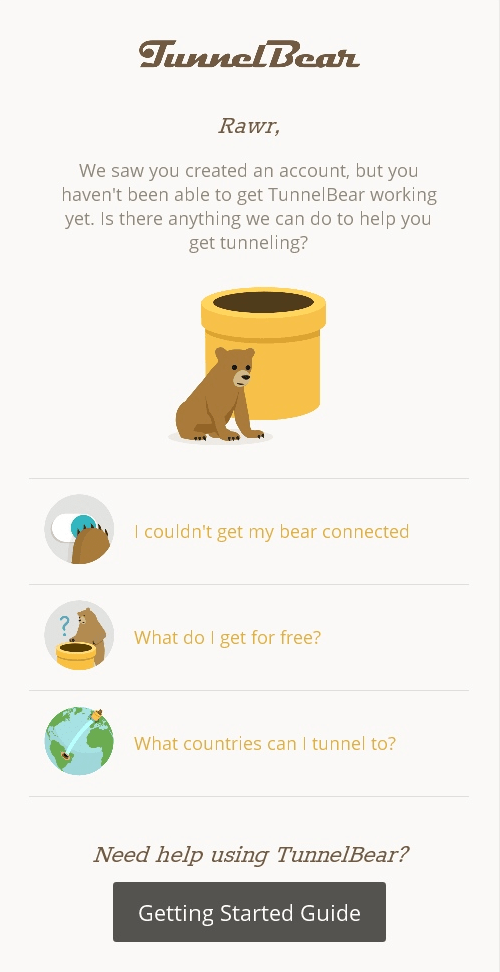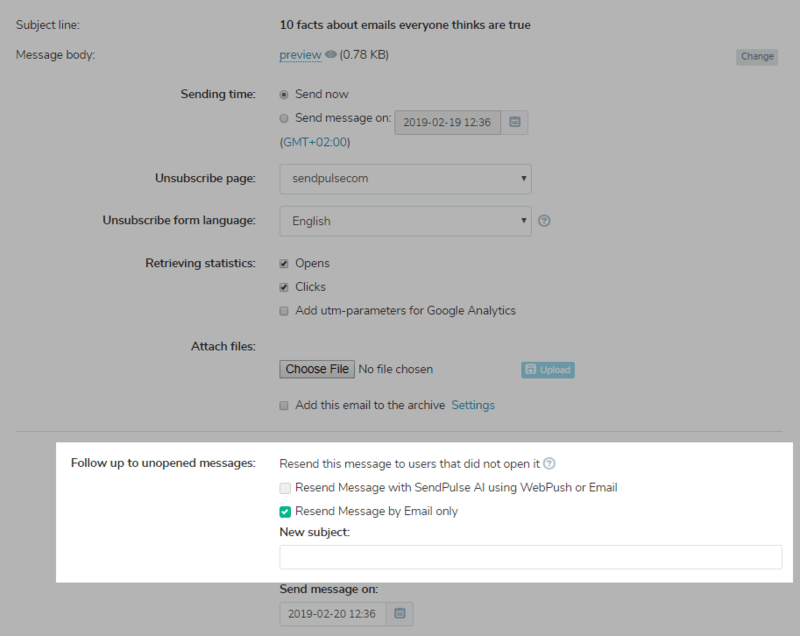The most successful email marketing practices are usually spread around the marketing community as email facts, which enable everyone to apply them in their projects. However, with time, some of these practices get outdated and thus surrounded by myths and misconceptions. In this entry, we are going to break some of these misconceptions and prove 10 popular false facts about email marketing. Why? Because using ineffective methods can cost you time, effort, and lost ROI opportunities, which we surely don’t want to happen.
Let’s get started and learn what email facts are no longer true, and why.
False email fact #1. The more subscribers, the better
True fact: what really matters is the quality of the mailing list.
Having a large mailing list is an amazing thing, but if you try to grab on to a bigger number of email addresses, you are likely to make some mistakes.
First of all, you may forget about cleaning your mailing list. We understand that you might have been collecting those addresses for a long time and it would be a pity to just get rid of some of them. But the thing is, with time, some subscribers stop using their email addresses, and anti-spam services turn them to spam traps. If you don’t notice such traps on your mailing list and continue to send email campaigns to them, your sender reputation may be damaged.
Secondly, you may enlarge a mailing list using a single opt-in subscription method. The latter, however, is not approved by spam services, which might “sign up” to your emails and then accuse you of sending spam. In addition, real users who join your list through single opt-in may simply forget about this fact and not recognize you in the future, marking your email as spam.
To keep your mailing list quality high, remember to
- clean your mailing list with email validators, which will filter inactive or non-existent email addresses out;
- use double opt-in to make sure your emails go to people who are indeed interested in them.
False email fact #2. Open rate is enough to measure the success of the email campaign
True fact: to measure the effectiveness of your email campaign, it’s important to track several metrics, including open, click-through, and conversion rates.
Opening an email is just the first step. Your subscribers should further read it, click on the links, and make purchases. That’s why it’s vital to understand what your audience is doing at each step: whether they read or delete the email, whether they follow your links or just close the email. Only by tracking all important KPIs can you bring your email marketing to the next level.
False email fact #3. It’s bad if people unsubscribe
True fact: it is a natural process when people unsubscribe.
If the percentage of unsubscribes is more or less stable, you shouldn’t worry about it. One of the true email facts you should know is that the unsubscribes help you keep communicating only with those people who are really interested in your content. If the percentage gets higher, you should find the problem and make some changes to your email marketing strategy.
False email fact #4. Inactive users should be deleted
True fact: it’s worth trying to reactivate “sleeping” subscribers.
Any mailing list contains the subscribers who have never opened your emails. Perhaps they signed up to receive a free eBook or trial and were not interested in your further email campaigns. Even though it may seem logical to delete them, you should try to reawaken them first using a re-engagement email campaign.
Re-engagement campaign may be a reminder, where you re-introduce yourself and try to begin a conversation, a survey that can help you better understand your subscribers, or simply a gift to those who paid attention to your emails. A subject line for such emails should be different from those you usually write to catch the eye of those who don’t open your emails anymore or never opened them at all.
Take a look at how Tunnel Bear reintroduced themselves in a funny manner and provided some simple steps for those who created an account but never used it.

False email fact #5. It’s worth sending emails only on “best days” and “best hours”
True fact: there is neither “best” day nor “best” time for everyone.
Among popular facts about email you may find an opinion that the best days for sending out emails are Tuesday, Wednesday, and Saturday. In reality, every industry, every audience, and every company has its own best timing for emails.
Hold A/B tests and try sending out emails at different days of the week and times of the day to find out which work best for you and your audience.
False email fact #6. There’s no point in re-sending the same email
True fact: sending the same email with a different subject line twice brings higher open rates.
Your subscribers may miss your emails here and there, and you may lose time and money if you won’t try to reach out to them again. That’s why it’s reasonable to resend the email one more time with a bit different subject line but the same content.

False email fact #7. Nobody reads long emails
True fact: effectiveness of your email does not depend on its length. What matters is its structure, illustrations, and typography altogether.
Long emails can be as effective as short ones. Yes, it’s not easy to keep your reader interested until the very end of the email as well as to write a long email which would contain only valuable content. Nevertheless, some companies manage to do a good job at long emails.
For example, Brain Pickings have never sent short emails, but still thousands of recipients read them every week. These emails have a nice visual hierarchy — there are headings, images, citations, and other elements that make it easier for the reader to comprehend the entire email.

False email fact #8. Words like “free” trigger spam filters
True fact: words like “free,” “best offer,” exclamation marks, and so on can be used legally and are not directly connected to spam.
There is no official information about the “forbidden” words that play a critical role in spam filtering decisions. This email fact appeared when spammers, trying to follow the recommendations of marketers, started to use trigger words too often. However, apart from such words, spammers tend to use provocative headlines, capslock, and don’t include the unsubscribe button.
This means that if your email brings value, its content is consistent with the subject line, there is a clear unsubscribe option, and you can really offer something for free, you can safely mention it.
False email fact #9. Automated emails are impersonal
True fact: automated emails are personal if set up correctly.
Automated emails are scheduled in advance to be sent to particular audience, at particular time, and as a result of particular conditions being triggered. Yet, the one who is setting and writing such emails is a person, not a robot.
What makes these emails sound impersonal is the tone of voice. For example, one of the types of automated emails is an abandoned cart. Such emails are sent as reminders to website visitors who added an item to a cart but didn’t proceed to checkout. These users most probably won’t consider a single friendly reminder impersonal. However, if, let’s say, there was a sale and users added different items to the cart four times during one day and then received four different notifications, they will obviously infer these notifications were sent by a robot.
To make your automated emails more personal, customize them by using personal data and unite a chain of similar events into a single email not to overwhelm your subscribers.
False email fact #10. Frequent emails will lead to unsubscribes
True fact: by increasing the frequency of your emails, you can attract more people to your website and convert them into customers.
It is believed that sending out too many emails is one of the reasons for users to unsubscribe or mark emails as spam. However, “too many” is a relative concept. Marketing Charts company tried to send out one extra email a month and received additional 950,000 opens, 850,000 clicks, and a €600,000 increase in sales.
That’s why you should never stop experiment; just don’t forget to regularly track your metrics.
Trust email facts, but verify them
There’s a lot of email facts which can turn out to be myths. We recommend trusting but verifying them to make sure you are achieving the best possible results with effective techniques. To bring your ideas to life and test out different methods, try out SendPulse.





